Piping Plover Chicks Foraging
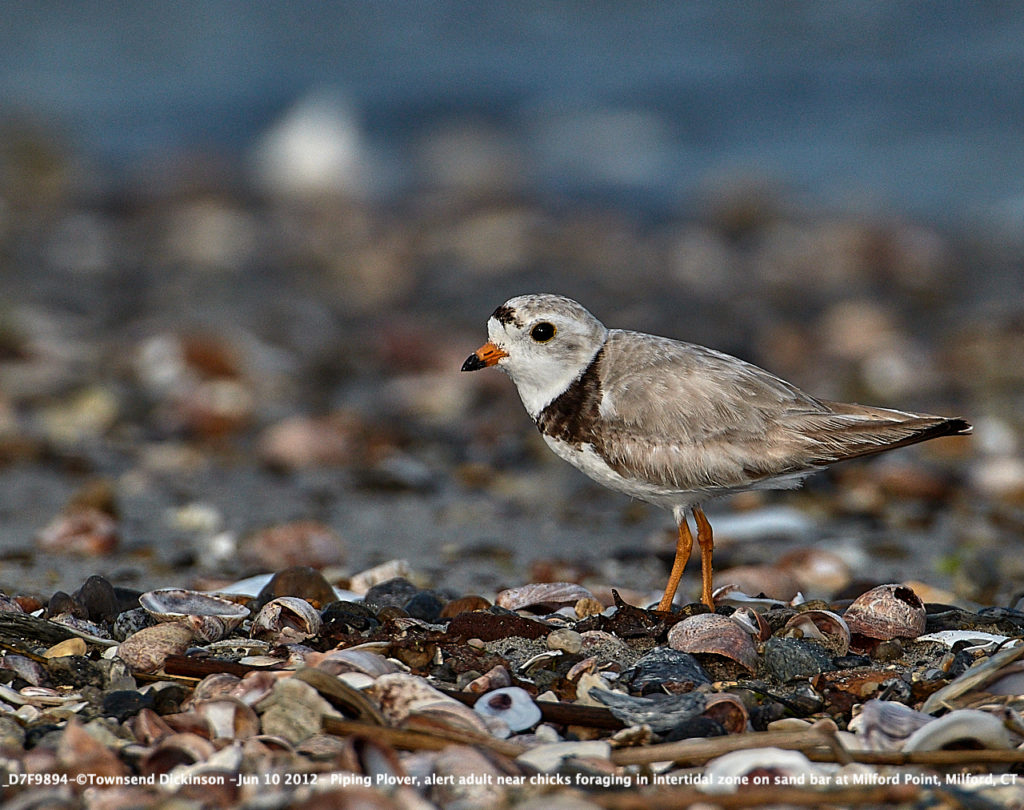
Lis#D7F9894-Jun 10 2012- ©Townsend Dickinson- Piping Plover, alert adult near chicks foraging in intertidal zone on sand bar at Milford Point, Milford, CT.
I do not remember why we visited Milford Point, on this late Sunday afternoon, June 10, 2012. The excuse probably was let’s go out for some fresh air and maybe see what birds were around, and maybe some prayers that the Point was not crawling with beach goers. We parked in the lot at CAS Milford Point and walked out to the sand bars on Long Island Sound. It was simply a lovely day, not much wind, and sun beamed dancing points on the blue sound waters.
My wife Mardi was with me, and luckily this Sunday we had the point almost to ourselves. I wondered off, closer the shore to see what was there. I had zero expectations as spring shorebird migration was winding down and there were only a few Semi-palmate Sandpipers in sight. I did notice a solitary Piping Plover eying me from afar. I know that the Milford Point Sandbar is one of few places they nest in Connecticut.
Milford Point has been one of my favorite destinations in Connecticut. The first time I came here alone, I used Nobel Proctor’s 25 Birding Areas in Connecticut to find the place. There were hundreds if not thousands of post breeding season terms roosting on the outer sand bar; I’ve not seen such a large group since that day. The undeveloped point was being considered for condos, and one could just walk the sand road past the houses. Luckily for birders, the McKinney National Wildlife Refuge came along. The sand bar at the mouth of the Housatonic River has changed substantially over the years and the exact place I made these photos is gone as storms migrate the sand.
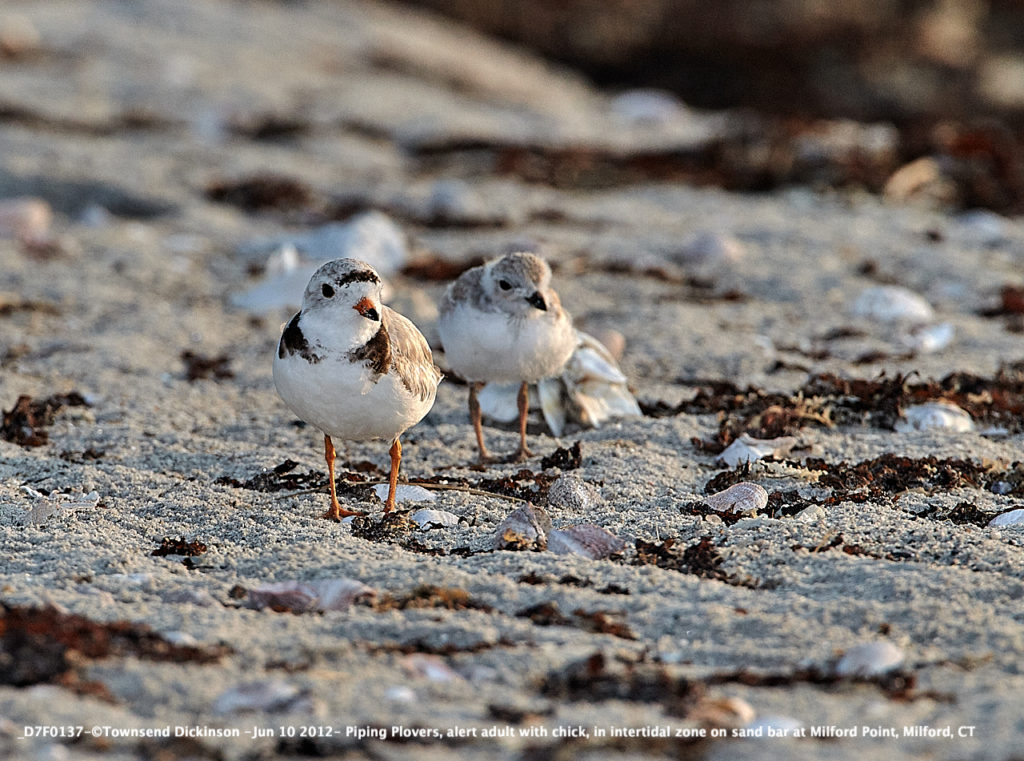
Lis#D7F0137-Jun 10 2012-©Townsend Dickinson- Piping Plovers, alert adult with chick, in intertidal zone on sand bar at Milford Point, Milford, CT.
So here I was, with my camera gear as usual and there were almost no shorebirds to photograph. I was content to hunker down in the sand to observe and soak in the salt air. Soon I realized that the adult Piping Plover, that I had seen earlier, was not only watching me, but was keeping an eye on foraging chicks further out in the now uncovered intertidal zone. The late light was pretty, the tide was falling and chicks were darting around on the exposed flats. The chicks are precocial, they can run about and forage on their own shortly after hatching.
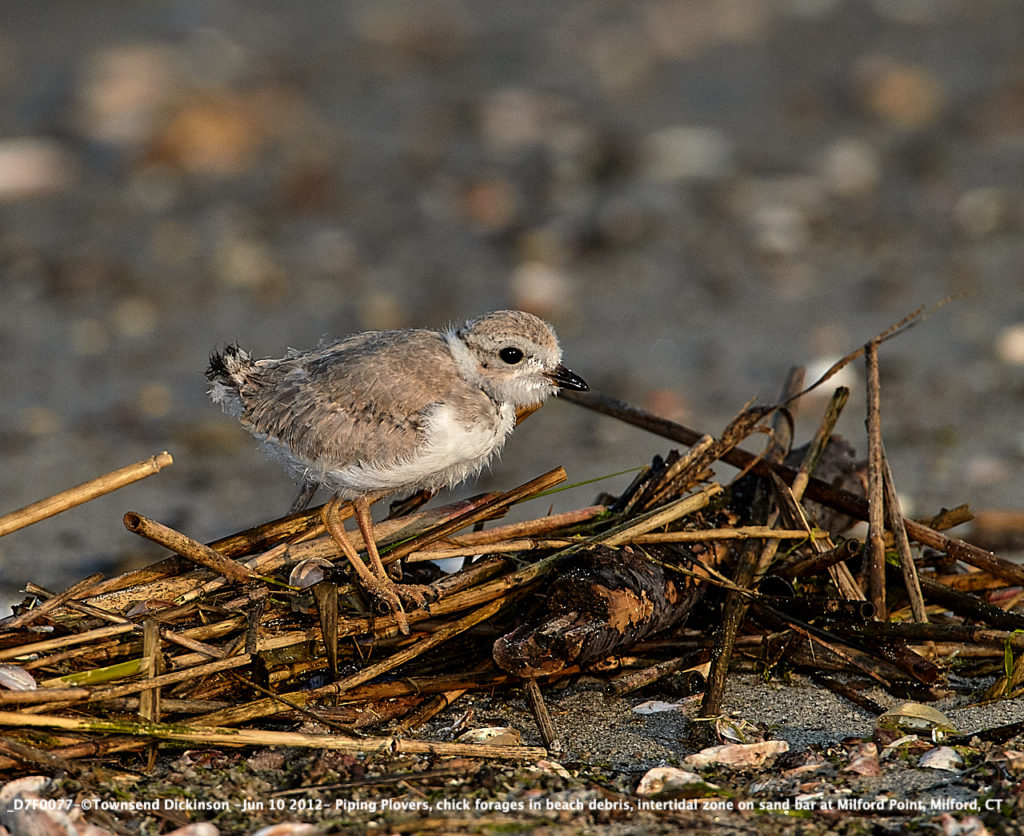
Lis#D7F0077-Jun 10 2012-©Townsend Dickinson- Piping Plovers, chick forages in beach debris, intertidal zone on sand bar at Milford Point, Milford, CT
I wished initially that they were closer, but I also knew that I was not going to chase them. My anxiety about causing them harm left me anchored to the sand. However all things, and Piping Plovers, come to those who practice patience. Gradually the birds, young and old, decided that I was just another harmless hunk of beach debris and their tolerance and gradual foraging behavior brought them closer. I began to take photos, taking care not make any sudden movements. Over the course of the next hour, from approximately 6:25 to 7:30, I made this series of photos. There appeared to be chicks from two sets of parents; one set with a larger, older chick, wandered into the foraging area, but did not linger.
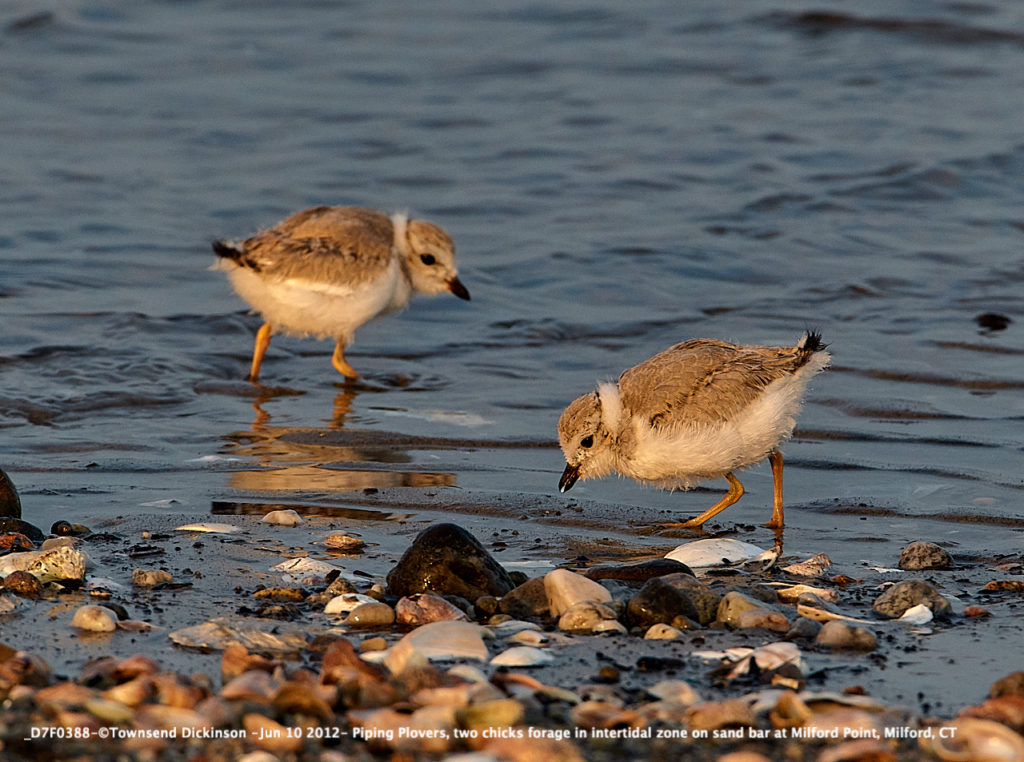
Lis#D7F0388-Jun 10 2012-©Townsend Dickinson- Piping Plovers, two chicks forage in intertidal zone on sand bar at Milford Point, Milford, CT
The Piping Plover is a protected species, federally listed as a threatened and endangered. Recently the USFWS estimate the world population at 8000. I usually avoid the point during the nesting season when Plovers, Least Terns and American Oystercatchers try to raise young on the bar. I do not want to be the one who causes a failure, but mostly I stay away for my safety and safety of others. I suffer fools poorly and am often tempted to point out the failings of others at my peril. Dogs, foxes, gulls, night herons, skunks, storms, tides, and clueless people are all threats to breeders on open sand beaches. Only people should know better.
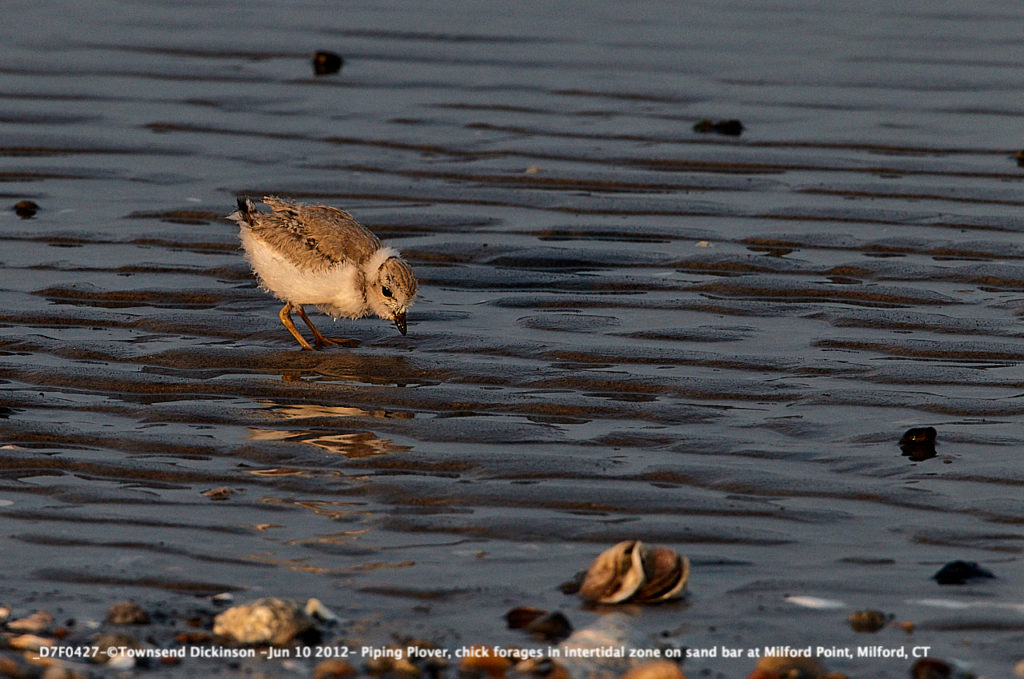
Lis#D7F0427-Jun 10 2012 ©Townsend Dickinson – Piping Plover, chick forages in intertidal zone on sand bar at Milford Point, Milford, CT
The frailty of this tiny chick, foraging with all the wisdom of its ancestors leaves me choked with emotion. I was in awe of its presence and felt blessed to have been a witness as it pursued its life business. Eventually the light failed and the bugs became more aggressive and it was over. This was an unplanned for adventure, but I was happy to accommodate the circumstances. I left with a clean conscious; I was not the one who bothered the birds this day. I also felt humbled that they allowed me to share the beach and a brief glimpse into their lives.
Addendum: Encounters Kentucky Warbler
BirdCallsRadio additional information:
Support BCR DONATE NOW
Like & Follow us on Twitter Instagram Facebook
BirdCallsRadio ON THE GO! Subscribe directly to Apple Podcasts; Stitcher; Spotify; iHeartRadio Google Play; to our podcast for Mac, PC & Android users emailed to you automatically so you won’t miss any BCR podcasts; and please leave us a rating and review if you would be so kind! We appreciate it!
